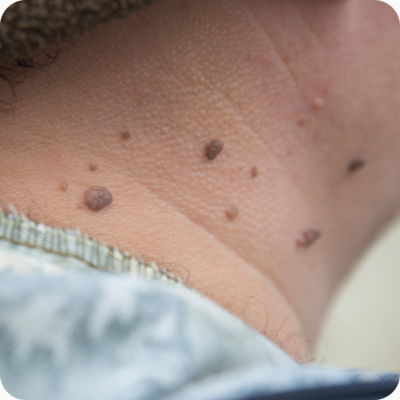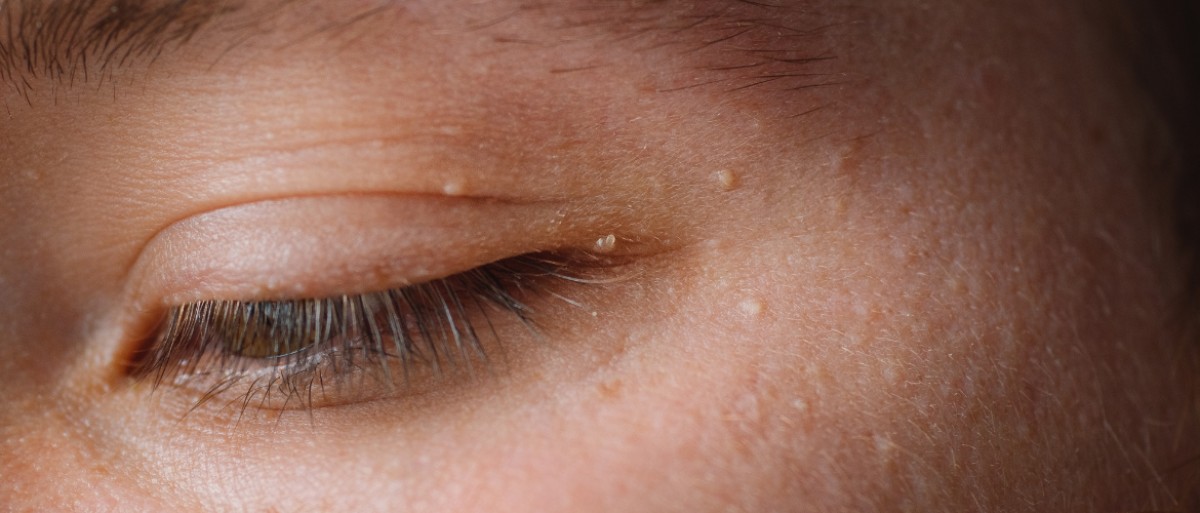What are papillomas?
The
papillomas is a benign, non-cancerous proliferation of epithelial cells, caused by the human papillomavirus (
HPV). This condition is usually caused by low-risk strains of the virus, although HPV is also known to be associated with
cervical cancer. Despite the fact that the
HPV can cause approximately 270.000 deaths per year worldwide from cervical cancer, 85% of these deaths occur mainly in developing countries.
Symptoms of Papillomas
The
symptoms of papillomas vary according to their type. For example, the commons
papillomas are commonly seen
in the hands or the fingers and have a
hard, pustular surface, while
papillomas on legs they usually develop on the sole of the foot and may cause
pain when walking. Papillomas are usually asymptomatic and are especially common in people after the age of
25-30 years. If they grow in size or multiply they can cause:
- Itch
- Heartburn
- Bleeding in case of self-injury
Where do papillomas appear?
The
papillomas usually appear in
hot and humid areas of the body where the skin forms folds and favors the growth of
HPV viruses. Such areas are:
- The legs (causes pain)
- The neck (causes hoarseness, difficulty swallowing)
- The chest (causes bleeding on scratching)
- The genitals (causes itching, burning)
- The armpits (causes itching, burning)
- The sinuses (causes pain)
The
genital papillomas require special care before removal and any possibility of association with must be ruled out
warts. The same applies to the
vaginal papillomas and
anal papillomas.
Scratching or rubbing can lead to
papilloma inflammation. In this case there is swelling and pain. In many cases, inflammation after papillary injury may require the use of topical or systemic agents
antibiotics.

Causes of papillomas
The
papillomas are caused by the HPV virus, which
transmitted through direct skin contact. The virus can enter the skin through small cuts or scratches, with papillomas often developing on the hands or feet. While the virus
HPV it is very common and there are more than 100 types of it, only a few of them cause papillomas. Papillomas in general can appear on anyone. But there are some
causes of papillomas which increase the chances of their occurrence which are as follows:
- Heredity
- Pregnancy
- Obesity
- Endocrine diseases
- Smoking
- Skin damage from sun exposure
How are papillomas transmitted?
The papillomas
they are not easily transported from one person to another. However, some people may be more susceptible to infection from the virus. Also, the spread of papillomas in the same person can happen
through contact or injury of the area. HPV types 6 and HPV 11 are the main causes of papillomas, along with many other low-risk HPV types.
How is papilloma diagnosed?
Η
diagnosis of papillomas usually done by physical examination, unless the diagnosis is uncertain. In this case the tests may include:
For breast papillomas:
- Ultrasound
- Mammography
- X-ray
For papillomas on the neck:
For sinus papillomas:
- Nasal endoscopy
- Tomography (CT) scan
What is the treatment for papillomas?
Most
papillomas resolve on their own and are considered benign. The treatment of papillomas includes the following ways:
- Excision
- Chemical peels
- Laser treatment
- Cryotherapy (freezes warts)
- Medicinal ointments ή salicylic acid patches available without a prescription
- Scrape
Η
treatment for papillomas in his duct female breast and in the sinuses it usually includes
surgical removal of the papilloma.
Η
papilloma treatment in the throat (larynx) includes
laryngoscopy with surgical removal using the carbon dioxide (CO2) laser. In severe cases a tracheotomy may be necessary.
Prevention of papillomas
For the
prevention of papillomas, it is recommended to avoid
direct contact with papillomas, keep your hands and feet clean and dry, and wear protective footwear in public areas such as swimming pools and changing rooms. Avoiding the spread of the virus can also be achieved by
use of condoms and dental dams. At the same time, the basic prevention strategy is
vaccination. The vaccine
HPV has been shown to be effective in preventing the appearance of serious precancerous changes in
cervix in uninfected individuals. The ideal age for her
First installment of the vaccine is at
11 or 12 years for each gender. If the vaccine is given
15 years ago of age, are enough
two doses. In case of immunosuppression, however, three doses are required.
Find on
wecare.gr the right papilloma prevention products (eg condoms) at affordable prices!
Sources:
- Prevention of Papillomavirus
- Papilloma: Causes, symptoms, and treatment
- Papillomas - What are they
- What Causes Papillomas?
- Papilloma - Symptoms














